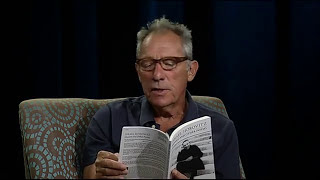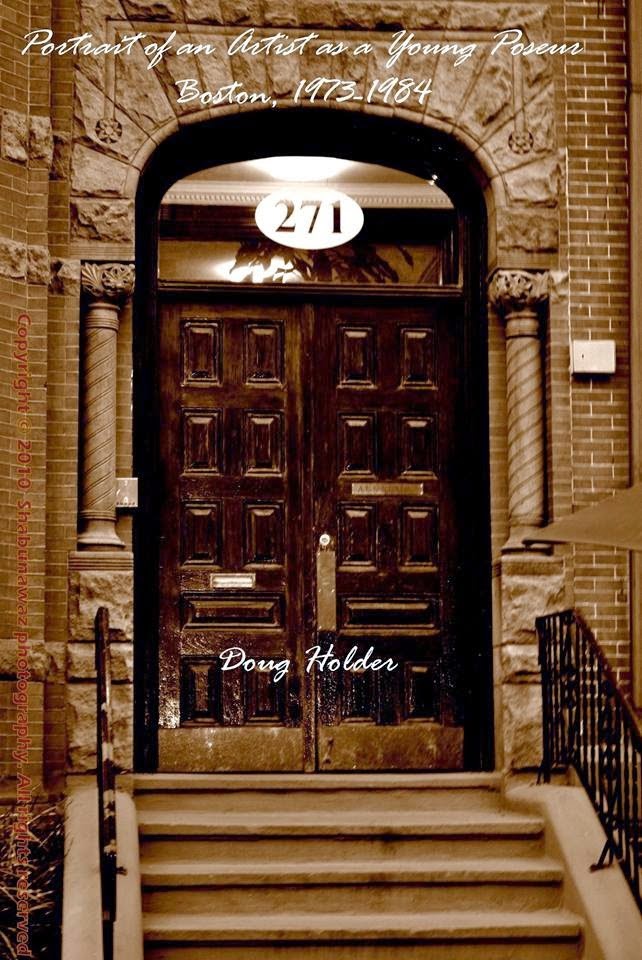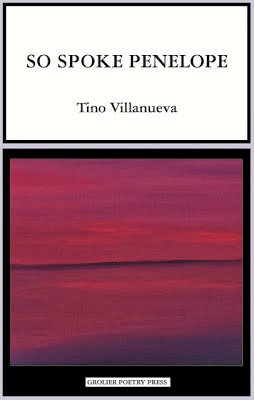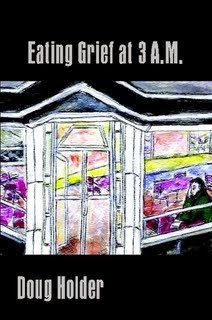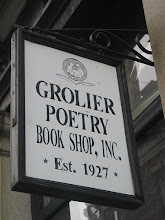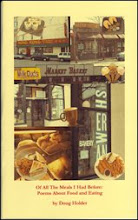Friday, April 19, 2024
From the classroom: I am mad as hell and I am not going to take it anymore...
Red Letter Poem #203
The Red Letters
In ancient Rome, feast days were indicated on the calendar by red letters.
To my mind, all poetry and art serves as a reminder that every day we wake together beneath the sun is a red-letter day.
––Steven Ratiner
Red Letter Poem #203
Dunlin
Its breeding plumage so bright
it looks like a different bird
just as you in rehab,
or soon after,
glowed
with light
only to twist again,
dun-colored, into addiction.
I wanted to keep that light—
you and I circling the rehab
by the horse stables
as you tell me your roommate OD’d.
Before leaving I stand before the Memorial Wall:
See you in Heaven/Our forever angel/ Miss you, Daddy—
hearts cracked in two.
I retrieve my car keys, cell phone, to head home.
Stop time, God!
I yell in my empty car
as traffic slows on the Mass Pike
and ahead, blue lights flash.
––Lee Varon
In the catalog of human anguish, certainly near the very top of the list must be the experience of helplessness. And to my mind, that powerless feeling is more painfully acute when it concerns someone we love––even more so than for our own suffering. Perhaps a mother’s empathetic connection with her child merits its own special category––and it’s precisely what we’re witnessing in Lee Varon’s new poem “Dunlin.” In a way, addiction is like a slow-motion car crash––a careening toward disaster, drawn out over months, even years––and loved ones are forced to witness the calamity, hearts constantly bracing for what may be that final point of impact. At the outset of the poem, our hearts lift a bit with the thought of the Dunlin’s breeding plumage, imagining the long-beaked shore bird resplendent with rust and black stippling across his back. It’s a reminder that love (or the need for it) has the power to transform. But again and again, it seems, her son slips back beneath the pain-gray cloak of addiction––and the mention of some other unfortunate soul’s overdose can’t help but chill us at the core. When the narrator is once again alone in her car, the unbearable pain overwhelms and she screams out for some divine intervention, for time itself to cease––a balm which (at least for this poem) is not granted. Instead, those flashing police lights on the stalled Turnpike remind us that tragedy may befall any fragile being at any moment, though still we must try to continue on our way.
Lee is an award-winning writer of poetry and prose, as well as a social worker by profession. She won the 19th Annual Briar Cliff Review Fiction contest, and her poetry and short stories have appeared in numerous fine journals. In 2017, Finishing Line Press published her chapbook, Affairs Run in the Family and, the following year, she won the Sunshot Poetry Prize for her book, Shot in the Head. Today’s poem will appear in a forthcoming collection entitled The Last Bed (Finishing Line Press.) Lee also authored a children’s book about substance abuse disorder: My Brother is Not a Monster: A Story of Addiction and Recovery.
In another of Lee’s poems, these lines appear: “my poems are small flags/ waving on a red hillside”––and I believe that icon speaks to something essential within her work. Of course, there is a certain ambiguity about the flags in question: are they ‘red flags’ coloring the hillside––a traditional warning about danger, even impending disaster (and today’s poem is certainly intended to focus our attention on the awful cost of not addressing the opioid crisis engulfing our nation.) But if the hillside is red on its own, then flags fluttering could be a metaphor for the wildflowers in spring, the ultimate sign of hopefulness––and hope is, quite often, the only response to/remedy for helplessness. In fact, the very act of transforming a moment of suffering into ink on the page displays an ultimate faith in this confounding existence; it imagines that the writer with the pen in her hand is slightly removed from her counterpart on the page (achieving, perhaps, some slight elevation where the shift in perspective can’t help but broaden our understanding.) It even envisions the possibility of other eyes who will, sometime, confront these written lines and take their bearings from what has been shared. Some may even be survivors of a calamity like this one (as is, I am happy to report, Lee’s son), and wish to celebrate the fact that those red flags have miraculously evolved into red-letter days.
Red Letters 3.0
* If you would like to receive these poems every Friday in your own in-box – or would like to write in with comments or submissions – send correspondence to:
steven.arlingtonlaureate@gmail.com
* To learn more about the origins of the Red Letter Project, check out an essay I wrote for Arrowsmith Magazine:
https://www.arrowsmithpress.com/community-of-voices
and the Boston Area Small Press and Poetry Scene
http://dougholder.blogspot.com
* For updates and announcements about Red Letter projects and poetry readings, please follow me on Twitter
@StevenRatiner
Monday, April 15, 2024
Arts and Animals: Poems by David Campbell
.jpg) |
Arts and Animals: Poems by David Campbell
Goose River Press, 2022 95 pages $14.95
Review by Off the Shelf Correspondent Denise Provost
Especially in Somerville, many will recognize David Campbell’s extraordinary paintings of local scenes. Campbell’s hyper-realistic scenes of our post-industrial landscape are easy to recognize. His subjects, often painted from rooftops, include defunct factories, dingy streets, wire-crossed horizons, moody skies. Have you looked at Campbell’s painting of Everett Avenue, which hangs in Somerville City Hall – doesn’t it take your breath away?
Campbell’s brilliant paintings have overshadowed his accomplishments as a poet. The poems of Arts and Animals demonstrate the same clear vision and dedication to craft that radiate from Campbell’s canvases. His two chosen arts inform each other in highly satisfying ways.
Some of Campbell’s poems observe the act of painting. In “The Art Life,” we are taken on a journey of growth and disappointment: Ambition came home from the marketplace. Its narrator recollects the doors/I was ushered into and out of. Ultimately, direction shifts:
Ambition is at home
contemplating a plain wall and a window
among trains and loading docks
in a warehouse district
I tend my own house of wares
my light industry.
Expanding on this theme in “Ambition is a Crop,” the poet describes his work this way:
My job freeze-frames/the planet in its tracks/grinds halts/to time’s continuum/for shing moments/across Somerville and Cambridge.
Other Campbell poems are conventionally ekphrastic – a term taken from the Greek language, referring to poems about other works of art. From them, we can picture a fall of puppet-wire rain, in a print by Hiroshige; almost see how “the two Vermeers muse quietly/in their tiny halls of mirrors….” Yet in these poems, Campbell also reveals much about his own philosophy of art – and of life, the two seemingly inseparable for him. The wry “Rembrandt Self-Portrait” interrogates the artist to reveal his motive force, receiving as its answer: The visual is everything/or else why paint?
In the marvelous “Colmar,” Campbell describes the history and details of Grunewald’s spectacular Isenheim altarpiece. Unflinchingly, he links the pests and famines/and flames of God’s Gothic will to the present horrors of our epidemic wars. Then, musing on the depiction of malign beings
Up they come from Europe’s darkside undertow,
in from a background of arsonist
house-wrecking devils: Fear and Dread
personified, a toppling wave
of jabbing beakheads, blubbery mouths
spiked and blade-feathered hybrid howlers
scrabbling like panicked crabs in a box….
Unexpectedly, some of Campbell’s ekphrastic poems are about music. Some poems tackle the challenging task of describing orchestral music. Others, like “The Hills of Roane County,” arise from song lyrics.
Long, narrative poems are difficult to pull off, especially in these times. Readers have become used to shorter, more episodic or lyric poetry. Campbell’s Roane County poem is based on an Appalachian ballad about thwarted love, and what becomes of two separated lovers over time. It’s a beautifully wrought work, philosophically wise about the workings of the heart. The jarring “Snapshot, 1953” recalls the dissonance of hearing a group of ankle-chained prisoners sing “Without a Song” while doing road work.
Campbell’s poetry is generally preoccupied with human creativity, morality, and sense of meaning. But he is just as attuned to the dramas of the natural world. “Crows,” as he describes them, are all revved up like a motorcycle gang/taking over a forest in a drunken ruckus, then/suddenly moving on….” “Monarch” portrays the butterfly as, sovereign of sovereigns, its broader wings/the tickets to Mexico/when it locks eyes with the lowering sun/at the inbred angle. Of “Squirrels,” Cambell relates how:
Winter came
and wiped out the coordinates
of their buried hordes. We watched
their random, hopeless clawing at the snow….
The image presented by these four lines is not just visual – it is practically an animation. It brings to mind Bruegel’s painting “Hunters in Winter,” weary figures
trudging through the cold, returning almost empty-handed. It’s a reminder that nature, while it has its own laws, is indifferent to individuals.
David Campbell’s paintings – which also give us much to think about - are displayed in the collections of esteemed museum and private collections. His deep, reflective poetry is as close as a favorite bookstore. Campbell’s vision and insight shine from both.
Sunday, April 14, 2024
Climate Capitalism by Akshat Rathi
Climate Capitalism by Akshat Rathi. Greystone Books, London, 2024.
Review by Ed Meek
We Have Made Progress
In 2007, Al Gore’s film An
Inconvenient Truth warns of melting ice caps, rising seas, flooded cities
and other disasters. Although Gore was the object of ridicule for what seemed
then to be outlandish predictions, the manifestations of climate change since
then have been relentless. In the years since Gore’s film, New Orleans, Miami,
Atlantic City, lower Manhattan and the Seaport of Boston have all been
underwater. Oh, and last year was
the warmest in 125,000 years.
In 2014, Naomi Klein wrote This
Changes Everything in which she argued that capitalism was leading to
climate change catastrophes. In 2019, David Wallace Wells published Uninhabitable
Earth. with worst-case scenarios: the end of life as we know it. For a
few years there, the news was all bad, from UN climate reports to extreme
weather events. Many of us were beginning to feel as if we were doomed and that
humans, not especially good at playing well together or planning long-term,
were not up to the challenge presented by climate change.
But recently, a shift has taken
place in the global zeitgeist. There is now a preponderance of positive
developments regarding the efforts, worldwide, to deal with climate change.
This is happening for two major reasons. One is the plunging cost of green
energy resulting in the fact that in many cases it is now cheaper to go green
than to rely on fossil fuels. At the same time, it is becoming more and more
apparent that the costs of not transitioning from burning fossil fuels to green
alternatives are rising every year. The fires, storms and floods cause billions
of dollars in damage and lost work. And the changes in climate may even be in
large part responsible for the international refugee crises. Insurance
companies are raising rates and, in some cases, refusing to insure coastal
regions. And lawsuits against companies like Exxon are increasing.
Akshat Rathi, a reporter for
Bloomberg News with a PhD in organic chemistry from Oxford has written Climate
Capitalism as a testament to the positive changes that are taking place all
over the world as a result of actions in “politics, technology and finance” to
address climate change. “It is now cheaper to save the world than to destroy
it,” he tells us. Rathi traverses the globe to engage with some of the major
players in the fight against climate change.
He goes to China to talk to Wan
Gang who was China’s minister of science and technology for many years
beginning in 2007. Gang was directly responsible for developing China’s
electric car industry “which sells more than 6 million EVs each year.” That’s
three times as many as Tesla the most valuable car company in the world).. Rathi
points out that “EVs are a climate solution because…they convert 90% of the
energy stored in batteries into motion.” By contrast, gas powered engines use
less than 30% of the energy from burning fuel while spewing carbon into the
air. As in many other sectors of manufacturing, the Chinese government invested
vast amounts of money to help develop their EV market share. Rathi goes from
there to talk with the CEO of Contemporary Amperex Technology Limited, the
biggest manufacturer in China of batteries. According to Morgan Stanly, “China
owns more than 90% of the EV supply chain.” Volkswagen and BMW get their EV
batteries from China; Tesla recently switched to Chinese batteries. In addition,
if you want solar panels and battery back-up for your house, they are probably
coming from China.
Rathi travels to India where solar
power is particularly suitable to India’s hot climate and despite the high cost
of capital, Indian entrepreneurs like Sumant Sinha are developing massive solar
farms.
He talks to the head of the
International Energy Association about the conflict between those who care
about climate and those who emphasize energy. You can see this tension in
China’s development of green energy while they continue to rely on coal. Rathi then
zeroes in on Bill Gates whose foundation invests in innovative approaches to
climate change. Among other things, Gates is investing in methods of
manufacturing “clean steel” and cement.
Rathi spends a couple of chapters
on a subject I was skeptical about: carbon capture. Removing carbon from
factory emissions is actually being done effectively now. It is not a solution
to climate change, but is similar to switching from oil to “natural gas” in
that it reduces the amount of carbon going into the atmosphere. It is from that
point of view an effective tool, since it gives us more time to implement
enough green energy to support our economies. There are still entire sectors
that need to use fossil fuels: trucking, aviation, the production of steel,
cement and asphalt to name a few. In Texas, Rathi finds CEO of Occidental Oil,
Vicki Hollub is using carbon capture to increase yields and cut carbon by
sending captured carbon back underground to oil wells cutting emissions and
increasing oil production.
Rathi goes on to green energy
standout Denmark which now gets two thirds of its electricity from wind
turbines (why can’t we do that?) and to the UK which has transitioned from
nearly total reliance on coal to a mix of gas, wind and solar.
Rathi’s refreshing take on the
green revolution reinforces Saul Griffith’s book Electrify
in which Griffith tells us that when we need to replace cars, appliances,
heating, we should go for the electric option. Rathi gives credit to the Paris
Accords for jump-starting international efforts and he reminds us of the
importance of the Biden Inflation Reduction Act in investing in green energy in
the United States.
Hannah Ritchie, Deputy Editor of Our
World in Data, has a new book Not the End of the World in which she also
argues that we are making progress in dealing with climate change (see
her Ted Talk). And David Wallace Wells
in his NYT climate newsletter tells us that he is surprised at much progress
has been made.
There are areas Rathi doesn’t get into,
hydrogen, new batteries from California based Quantum Scape, artificial meat
(and/or vegetarianism), walkable cities, etc. Nonetheless, Climate
Capitalism is a well-informed, accessible take on how the challenge of
climate change can be met with capitalism.
Saturday, April 13, 2024
Red Letter Poem #202
The Red Letters
In ancient Rome, feast days were indicated on the calendar by red letters.
To my mind, all poetry and art serves as a reminder that every day we wake together beneath the sun is a red-letter day.
––Steven Ratiner
Red Letter Poem #202
Family Photographs:
My Brother, Solar Eclipse, 1965
In a year, Haldol, ECT, the closed gates of a sanitarium.
But for now—how happy you were. To be eleven and unconcerned
For once with school, the Cubs, who punched who.
For a few minutes to be unlearned, to be taught
A new world. O, distant boy, how marvelous
It all must have been, to be turned into a ghoul with your friends,
To spurn the murmur of grown-ups with their highballs and hair
On the deck for a lowering sky burned sepia, orange.
At three o’clock to feel yourself disappear inside yourself —
To cast no shadow. And – so long ago now
how did you put it? —the delicious, insistent thought
What if it stays like this? To yearn and yet not to know yet
What that yearning meant.
––Danny Lawless
Danny Lawless is twice-blessed. This might seem like a strange thing to say because––reading through the poems of his new book, I Tell You This Now (Cervena Barva Press)––we find no small amount of anguish in his work, though it’s certainly balanced with an equal measure of love (with the two often inextricably braided inside a single poem.) In a note to me, Danny helped identify the source of both this grief and his early impulse to poetry: “I imagine the stirrings of poetry begin in one's sensitivity to the world. . .in my case, among three schizophrenic siblings: brilliant, kind, reserved, graceful boys and girl...until taken up by the whirlwind, each at puberty. I was 8 when my older brother was diagnosed; and then on down the line.” How carefully observed, agonizing, and yet utterly restrained his phrasing––“and then on down the line”––all qualities that appear throughout Danny’s poetry. Such sensitivity can easily become a burden, powerful enough to drag an individual under the waves, if one does not find a way to discharge some of those dire energies––and certainly Danny has done so marvelously in this, his second collection: clear-eyed, dream-stunned, painfully beautiful. His first blessing.
But then there is the life of a public poet, something Danny achieved slowly, only after a number of decades. As a young man, he began ‘publishing’ his poems on mimeo sheets stapled to telephone poles in Louisville where he went to college (influenced by his fascination with homemade concert posters similarly displayed during the early days of punk rock.) It would require a long gestation, but he eventually founded Plume: A Journal of Contemporary Poetry which has published monthly issues ever since 2012, as well as annual anthologies under the imprint Plume Editions. A dozen years on, and his journal has become one of the most vibrant forums for poetry and aesthetics, with a broad and loyal readership. The roster of poets who have appeared there is a who’s-who of contemporary writing. Blessing number two.
But let me focus for a moment on what takes place inside Danny’s poems. In “My Brother, Solar Eclipse, 1965”, for example, the diction has the lightness of childhood patter: school days, sports teams, “who punched who.” And so the contrast with that opening line (“Haldol, ECT, the closed gates of a sanitarium.”) strikes us like a gut-punch. The poet’s spot-on depiction instantly takes us back to our own childhoods when we experienced things like illness and loss as if they were vast and almost supernatural forces. How are we to comprehend, let alone resist, being swept away by them? But as an adult, we can’t help but feel a certain indignation: how dare illness trespass inside the precincts of innocence (followed quickly by the sobering realization: how dare I be surprised?) The love of his older brother is infused in the poem’s every detail; and then––beneath the encompassing darkness of a solar eclipse, the very natural order of the universe seemingly overturned––the brother risks a teasing/terrorizing proposition: “What if it stays like this?” But from where we readers are standing, the deeper meaning of the statement erupts, and our hearts can’t help but plummet. It is one thing to write poems that––in a sense which extends far beyond the metaphorical––help save one’s own life. In fact, I think that’s every poet’s and artist’s first responsibility: to build their own creative life raft to buoy themselves across the world’s treacherous flood. But when I am reading Danny’s writing, I don’t just feel a deep kinship with that elusive speaker; I find that the poems become vessels which I may board, bringing my own history and emotional turbulence as cargo. To say that something within a work of art has rescued me from my own disasters––that’s one of the highest compliments I can pay a fellow-poet. Danny strikes me as being quite a self-effacing individual, and I seriously doubt he would claim any of this for himself––but we can do it for him, and gladly. So perhaps I was incorrect when I called Danny Lawless twice-blessed. Thrice.
Red Letters 3.0
* If you would like to receive these poems every Friday in your own in-box – or would like to write in with comments or submissions – send correspondence to:
steven.arlingtonlaureate@gmail.com
* To learn more about the origins of the Red Letter Project, check out an essay I wrote for Arrowsmith Magazine:
https://www.arrowsmithpress.com/community-of-voices
and the Boston Area Small Press and Poetry Scene
http://dougholder.blogspot.com
* For updates and announcements about Red Letter projects and poetry readings, please follow me on Twitter
@StevenRatiner
.jpg)



